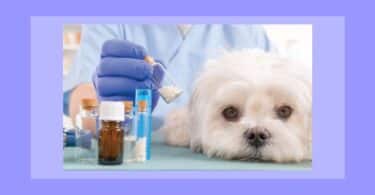In November 1995, a two year old cat, Finkie, suddenly developed a high fever of 105 F (40.6 C) along with noticeable weakness and lethargy. On moving about he was wobbly, likely because of the weakness. A blood analysis showed that there was a high white blood cell count which is typical of some sort of infection. We did not know what the source of infection was, but often when there are no other signs of illness (like from a “cold”) then it can be from the bite of another cat, as the small tooth punctures are often not visible. But we really had no idea why it had come about.
He had been taken to an emergency clinic and given antibiotics and was “somewhat better” but not yet normal. At this point he was brought to me for homeopathic treatment. An advantage we have in using homeopathy is that we do not need to know exactly what the cause of the condition is. What we base our prescription on are the details of the patient’s symptoms, regardless of what brought this about. Of course, it is certainly an advantage if we do know the cause — for example there are certain homeopathic remedies for animal bites, even one specifically for bites of an angry cat! Also if what has brought this about is something toxic, like a chemical exposure, there are other remedies especially indicated for that. But in this case we worked with what the cat was showing us, as this is all we had.
How we find the prescription
Working with an animal that is non-verbal, is much like taking the case of a young child. In the latter situation we do the best we can to observe the condition and signs and also interview the mother for details. With the animal we do the same and interview the client. Of course the information available to us is limited; we cannot use sensations for details of pains, or understand the emotional state in a definitive way so, by necessity, we emphasize the condition, location, modalities and concomitants — and as much as we can general symptoms.
The first thing we do is extract the symptoms and make a list and considering the limitations just mentioned, here is what I get from the situation.
1. Fever, from some inflammation in some part of the body.
2. Fever is accompanied by a noticeable physical weakness.
3. Lethargy, not wanting to move about.
Granted this is not much, but at the same time very typical of an animal that is acutely ill and not yet showing the developed pattern of illness. So using what we have we turn to the homeopathic repertory. In this case I am using the New World Veterinary Repertory, but the graph would be the same using the Boger/Boenninghausen rep.

Using just these two symptoms we have a selected group of remedies to consider. It is likely that one of these is what we need — how to narrow down? First we can assume, following Hahnemann’s instructions, that in an acute situation like this we will likely not be using an antipsoric, but rather one of the apsoric remedies. So we take out Phosphorus and Arsenicum from our consideration. Granted it could still be one of these remedies, but we don’t see the confirmatory symptoms for either one of these. Often in animal cases it is the lack of a symptom that guides us to selection as much as the presence of a characteristic — not the ideal situation but a practical one. We don’t have the vomiting of stomach-warmed water of Phosphorus or the chilliness and frequent drinking of small amounts of Arsenicum for example. Here is the analysis showing the ones I most considered.

Bryonia very typically has profound reluctance to move and this cat was not like that. Then Aconitum certainly has the fever but also considerable fear and with the fever, thirst for cold water but Finkie was not drinking at all. Fever with lack of thirst is typical of Pulsatilla, as well it is a remedy that is often needed in cats especially if they do not show the irritability of Nux vomica, or the anxiety of Aconitum. It is supportive that Hering’s Guiding Symptoms gives this detail for Pulsatilla:
• Weakness of whole body; he is obliged to lie down.
• Tremulous weakness.
• Tired worn-out feeling.
So Pulsatilla looked the best choice to me.
The treatment
So here is what we did. We first stopped the antibiotics since they were apparently not a solution and also would interfere with our homeopathic treatment. Then Finkie was given the remedy Pulsatilla 30c, one pellet twice a day for three days. With most cases I would give the remedy once but, as Kent as suggested, in fevers it is often advantageous to give more than one dose of the remedy — at least until some improvement is noted.
Results
Finkie began to be noticeably improved right away, regaining strength and activity, with a lower temperature as well, and he quickly recovered. An interesting side note is that, once the remedy was started, the client observed him having small sneezes for a bit which then disappeared. So in hindsight it is likely that what was developing here was an upper respiratory viral infection rather than an abscess from a bite injury. Of course we did not know that at the time. If we had guessed that, the analysis would have been slightly different.

We see that there are some other remedies to consider using “zymotic fever” instead of “inflammatory fever” and taking out the antipsorics we would have Baptisia, Bryonia, Muriatic acid, Rhus tox., and Pulsatilla as top choices. Considering again how these remedies would manifest I would still have come to Pulsatilla, so the result would have been the same in my case.
Follow-up
On a recheck 2 weeks later his temperature was registered at 101 F (38.3 C) which is quite normal. A second recheck was another 5 weeks later and it was confirmed that he had been well during this time “looks great, much energy, eats well.” So it looks like our choice of Pulsatilla as the medicine was the right one.






